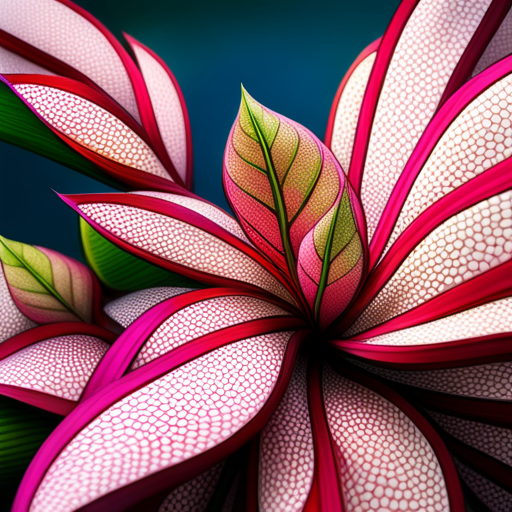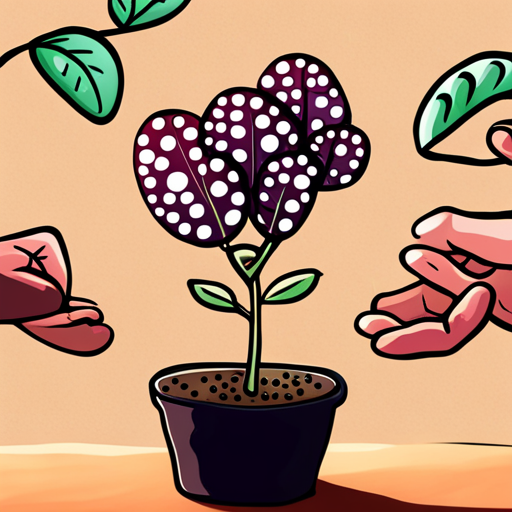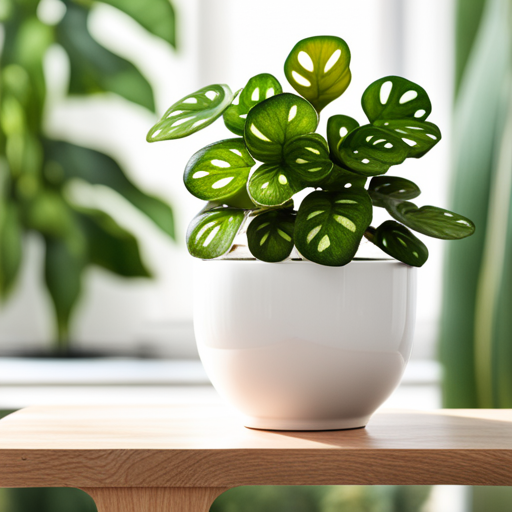This article aims to explore the lifespan of the polka dot plant, shedding light on its life cycle, propagation methods, and tips for growing it indoors.
The polka dot plant can be easily propagated through cuttings, and it comes in various varieties with different foliage colors, sizes, and shapes. The Green Splash Series stands out for its leaves adorned with markings, while the Red hot spot variety is commonly found in plant nurseries.
Although the plant may become dormant and even die completely after flowering, it can still thrive if allowed to flower and set seeds. To ensure optimal growth, the polka dot plant should be placed in bright but indirect light, preferably near a window. Regular watering is crucial, as the plant wilts when the soil begins to dry.
By following these guidelines, individuals can enjoy the vibrant colors and shapes that the polka dot plant brings to their indoor spaces.
Contents
Our Highlighted Points
- The natural lifespan of a polka dot plant is typically one year, but it can be extended with proper care and cultivation.
- The plant can be easily propagated through cuttings.
- There are various varieties of the polka dot plant with different foliage colors, sizes, and shapes.
What is it?

The polka dot plant is a plant that completes its life cycle in one year and can be grown indoors to prolong its lifespan. It is known for its different foliage colors, sizes, and shapes.
This plant offers several benefits when grown indoors, such as adding a variety of colors and shapes to the home. It is relatively easy to care for, making it a popular choice among indoor gardeners.
The polka dot plant does not require special attention or heat, but it should be watered regularly. It is drought-tolerant and will wilt when the soil begins to dry, indicating the need for watering.
Additionally, it grows well in low light areas, although it may become tall and weak. To ensure optimal growth, it should be kept near a window or in bright but indirect light.
Life cycle and propagation

Propagation of the polka dot plant can be achieved through the use of cuttings. Its life cycle typically spans one year.
This plant is easily propagated by taking stem cuttings and rooting them in a well-draining soil mix. The cuttings should be taken from healthy, established plants and placed in a warm and humid environment until they develop roots. Once rooted, the new plants can be potted and cared for as mature plants.
Growing polka dot plants indoors offers several benefits. It allows for a stable environment for the plant, protecting it from harsh weather conditions and potential pests. Furthermore, indoor growing allows for a variety of colors and shapes to be added to the home. Different varieties of polka dot plants exhibit unique foliage colors, sizes, and shapes.
Indoor growing tips

Indoor cultivation of the polka dot plant offers various advantages, including the opportunity to create a diverse range of colors and shapes within the home. When it comes to indoor care, it is important to provide the polka dot plant with suitable lighting conditions. Although it can grow well in low light areas, it is best to keep the plant near a window or in bright but indirect light. This will ensure that the plant receives enough light to thrive and maintain its vibrant foliage colors.
Additionally, it is important to water the plant regularly, as it is drought-tolerant but wilts when the soil begins to dry. By providing the polka dot plant with proper lighting and regular watering, it can be easily grown indoors and add a touch of beauty to any space.
Does Repotting Lucky Bamboo with Rocks Affect the Lifespan of a Polka Dot Plant?
Repotting lucky bamboo in rocks does not directly impact the lifespan of a polka dot plant. However, it can affect the overall health of the plant if the rocks hinder water drainage or root growth. Proper care, including regular repotting and suitable soil, is crucial for the polka dot plant’s longevity.
Frequently Asked Questions
Can a polka dot plant be grown outdoors?
Polka dot plants can be grown outdoors in warm climates but may not survive in cold climates. To care for them in outdoor gardens, they should be planted in well-draining soil, provided with regular watering, and placed in a location with partial shade.
How often should a polka dot plant be fertilized?
Polka dot plants should be watered regularly, as they are drought-tolerant and wilt when the soil begins to dry. They thrive in low light areas but should be placed near a window or in bright but indirect light.
Are polka dot plants toxic to pets?
Polka dot plants are safe for pets as they are non-toxic. However, it is still important to care for these plants around pets by keeping them out of reach and ensuring they are not ingested, as some pets may have sensitivities or allergies.
Can a polka dot plant be trained to grow in a specific shape or form?
Training polka dot plants into specific shapes can be achieved through regular pruning techniques. By selectively trimming and shaping the plant, it is possible to create desired forms. However, the lifespan of a polka dot plant is not directly related to its training or shaping capabilities.
What are some common pests or diseases that affect polka dot plants?
Common pests and diseases that affect polka dot plants include aphids, spider mites, and powdery mildew. Prevention measures such as regular inspection, proper watering, and providing good air circulation can help. Treatment options include insecticidal soap or neem oil for pests and fungicides for diseases. Signs of infestation include visible pests, webbing, yellowing or distorted leaves, and powdery white spots on leaves.

